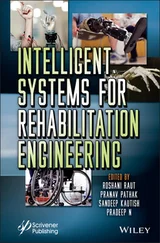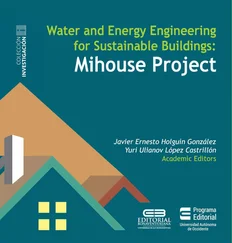Anil K. Chopra - Earthquake Engineering for Concrete Dams
Здесь есть возможность читать онлайн «Anil K. Chopra - Earthquake Engineering for Concrete Dams» — ознакомительный отрывок электронной книги совершенно бесплатно, а после прочтения отрывка купить полную версию. В некоторых случаях можно слушать аудио, скачать через торрент в формате fb2 и присутствует краткое содержание. Жанр: unrecognised, на английском языке. Описание произведения, (предисловие) а так же отзывы посетителей доступны на портале библиотеки ЛибКат.
- Название:Earthquake Engineering for Concrete Dams
- Автор:
- Жанр:
- Год:неизвестен
- ISBN:нет данных
- Рейтинг книги:4 / 5. Голосов: 1
-
Избранное:Добавить в избранное
- Отзывы:
-
Ваша оценка:
Earthquake Engineering for Concrete Dams: краткое содержание, описание и аннотация
Предлагаем к чтению аннотацию, описание, краткое содержание или предисловие (зависит от того, что написал сам автор книги «Earthquake Engineering for Concrete Dams»). Если вы не нашли необходимую информацию о книге — напишите в комментариях, мы постараемся отыскать её.
offers a comprehensive, integrated view of this progress over the last fifty years. The book offers an understanding of the limitations of the various methods of dynamic analysis used in practice and develops modern methods that overcome these limitations.
This important book:
Develops procedures for dynamic analysis of two-dimensional and three-dimensional models of concrete dams Identifies system parameters that influence their response Demonstrates the effects of dam–water–foundation interaction on earthquake response Identifies factors that must be included in earthquake analysis of concrete dams Examines design earthquakes as defined by various regulatory bodies and organizations Presents modern methods for establishing design spectra and selecting ground motions Illustrates application of dynamic analysis procedures to the design of new dams and safety evaluation of existing dams. Written for graduate students, researchers, and professional engineers,
offers a comprehensive view of the current procedures and methods for seismic analysis, design, and safety evaluation of concrete dams.


 , for the hydrodynamic pressure when the excitation is the horizontal ground acceleration and the dam is rigid ( Figure 2.3.1a), is the solution of Eq. (2.3.8)subject to the boundary conditions of Eqs. transformed according to Eq. (2.3.7):
, for the hydrodynamic pressure when the excitation is the horizontal ground acceleration and the dam is rigid ( Figure 2.3.1a), is the solution of Eq. (2.3.8)subject to the boundary conditions of Eqs. transformed according to Eq. (2.3.7):
 for the hydrodynamic pressure, when the excitation is the vertical ground acceleration and the dam is rigid ( Figure 2.3.1b), is the solution of Eq. (2.3.8)subject to the boundary conditions of Eqs. transformed according to Eq. (2.3.7):
for the hydrodynamic pressure, when the excitation is the vertical ground acceleration and the dam is rigid ( Figure 2.3.1b), is the solution of Eq. (2.3.8)subject to the boundary conditions of Eqs. transformed according to Eq. (2.3.7):
 for the hydrodynamic pressure due to horizontal acceleration
for the hydrodynamic pressure due to horizontal acceleration  of the dam vibrating in its fundamental natural vibration mode ( Figure 2.3.1c) is the solution of Eq. (2.3.8)subject to boundary conditions of Eqs. transformed according to Eq. (2.3.7):
of the dam vibrating in its fundamental natural vibration mode ( Figure 2.3.1c) is the solution of Eq. (2.3.8)subject to boundary conditions of Eqs. transformed according to Eq. (2.3.7):
 and
and  are obtained using standard solution methods for boundary value problems. Specialized for the upstream face of the dam, these functions are (Fenves and Chopra 1984a)
are obtained using standard solution methods for boundary value problems. Specialized for the upstream face of the dam, these functions are (Fenves and Chopra 1984a)






 are the natural vibration frequencies of the impounded water with rigid non‐absorptive reservoir bottom, and
are the natural vibration frequencies of the impounded water with rigid non‐absorptive reservoir bottom, and




 and
and  are now independent of the excitation frequency, and
are now independent of the excitation frequency, and  is equal to the hydrostatic pressure.
is equal to the hydrostatic pressure. for the hydrodynamic force on a rigid dam due to horizontal and vertical ground acceleration are computed from Eqs. (2.3.12a)and (2.3.12b)as the integral of
for the hydrodynamic force on a rigid dam due to horizontal and vertical ground acceleration are computed from Eqs. (2.3.12a)and (2.3.12b)as the integral of  over the depth of water. The real and imaginary components as well as the absolute value of
over the depth of water. The real and imaginary components as well as the absolute value of  , normalized with respect to the hydrostatic force F st= ρ g H 2/2, are plotted in Figures 2.3.2and 2.3.3for five different values of α as a function of the dimensionless excitation frequency
, normalized with respect to the hydrostatic force F st= ρ g H 2/2, are plotted in Figures 2.3.2and 2.3.3for five different values of α as a function of the dimensionless excitation frequency  , where
, where  ( Eq. (2.3.16)) is the first natural vibration frequency of the impounded water with non‐absorptive reservoir bottom. When presented in this non‐dimensional form, the plots apply to fluid domains of any depth. The real and imaginary components represent the in‐phase (or 180°‐out‐of‐phase) and 90°‐out‐of‐phase hydrodynamic forces relative to the harmonic ground acceleration.
( Eq. (2.3.16)) is the first natural vibration frequency of the impounded water with non‐absorptive reservoir bottom. When presented in this non‐dimensional form, the plots apply to fluid domains of any depth. The real and imaginary components represent the in‐phase (or 180°‐out‐of‐phase) and 90°‐out‐of‐phase hydrodynamic forces relative to the harmonic ground acceleration.










